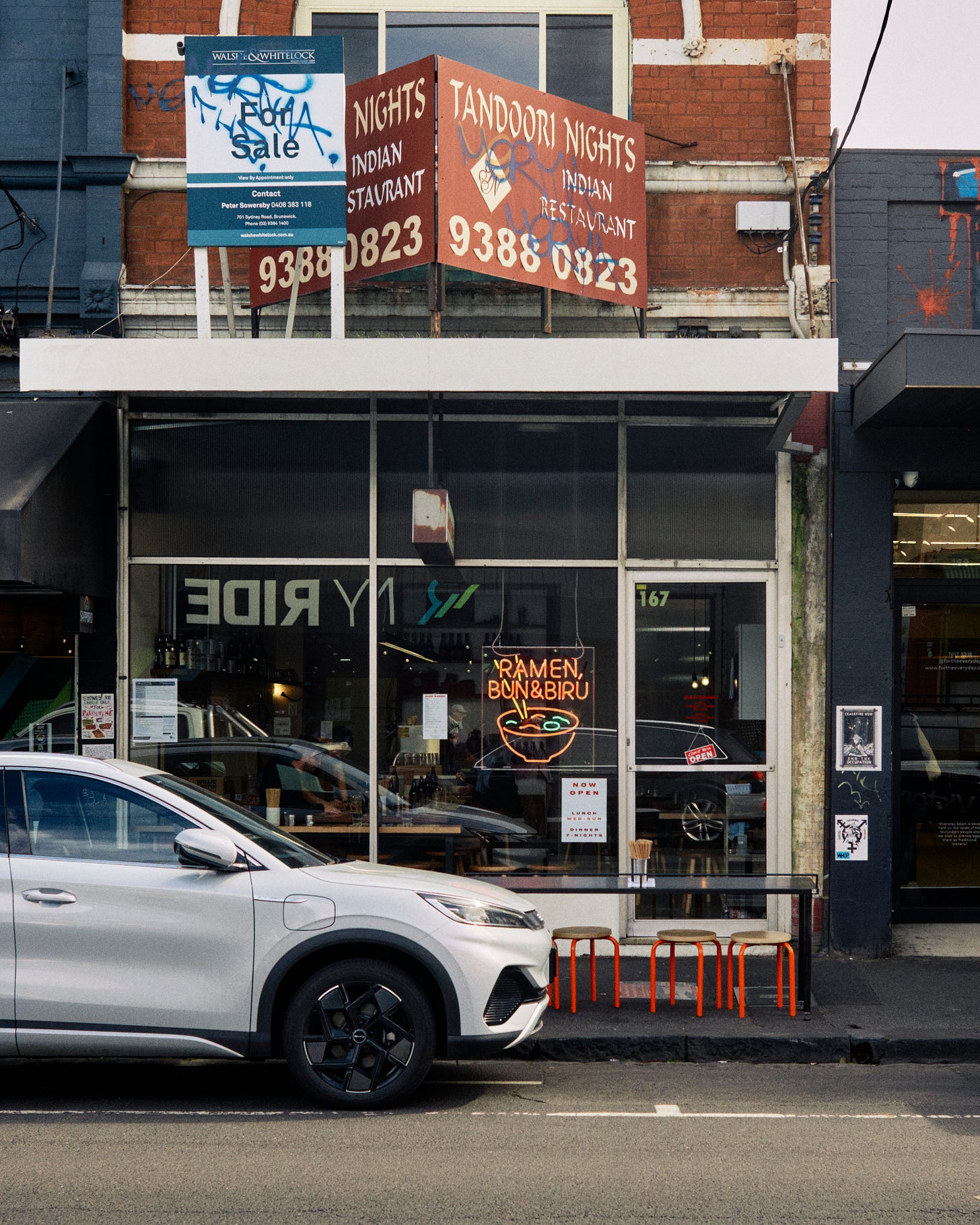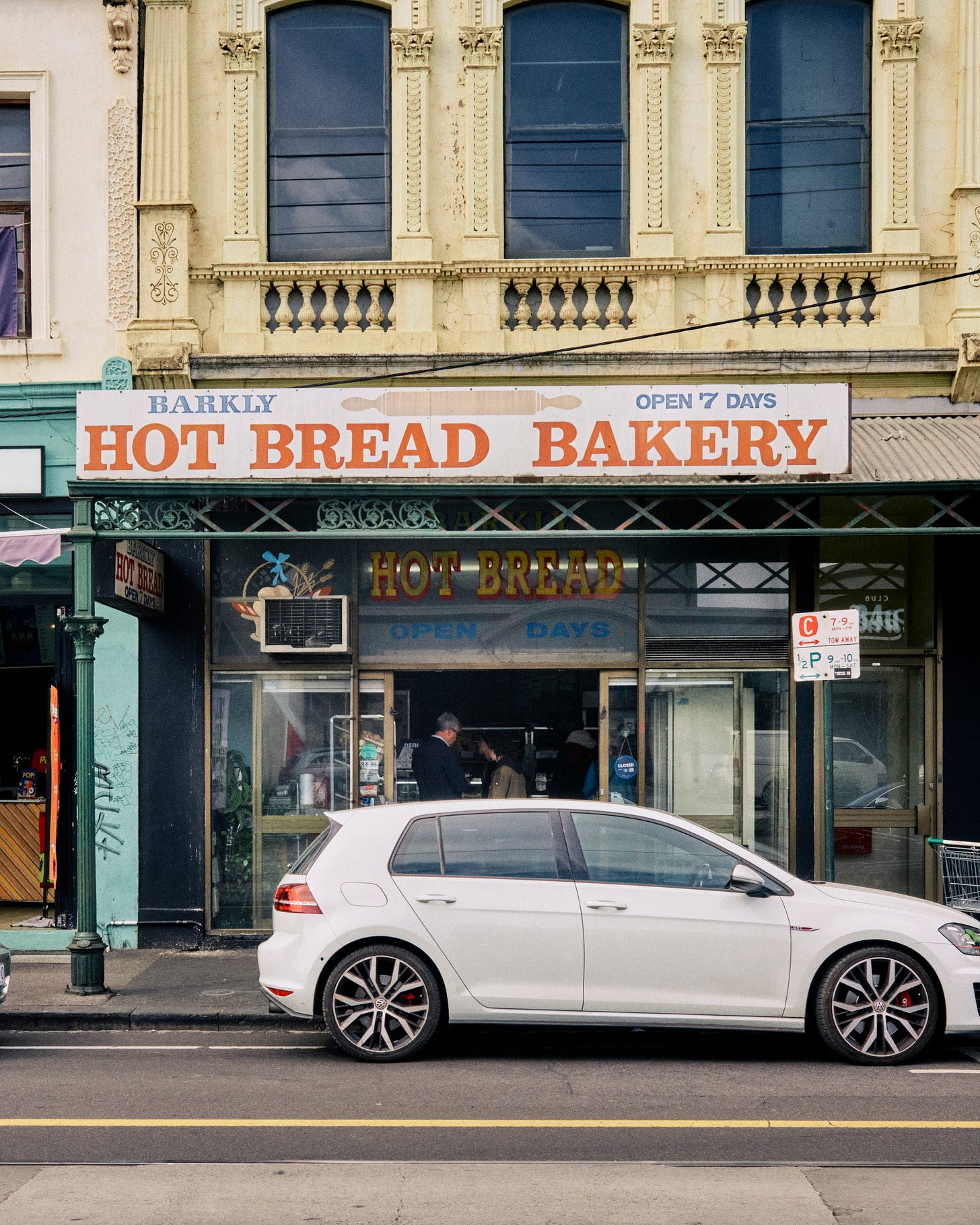Hot Bread.
You’re an editor of a food magazine / blog / podcast / YouTube channel and you need clicks.
What do you do, hot shot?
Duh, talk about Japan.
Oh, we just spoke about katsu curry last week?
Alright, let’s talk about authenticity.
If you’re smarter than a fifth grader, you won’t even utter the ‘a’ word.
You give it a little nudge.
With headlines such as:
PSA: this is how you should eat pho. Philadelphia chef gives his ultimatum.
Haiya. Malaysian middle-age man outraged by how the West cooks rice.
Manhattan health coaches open Lucky Lee, offering clean Chinese food.
Asian food critic shares his zhajiangmian recipe, claims it as the Chinese Bolognese.
I removed the names for obvious legal reasons, but all the events above happened.
They are real articles on real publications.
In hindsight, the headlines are a bunch of nothingburgers.
Easily countered by the question: who cares?
My Aussie-Vietnamese friends have been receiving strange texts from me since last week.
Why do Banh Mi shops call themselves ‘Hot Bread’?
It all started with the banh mi restaurant above.
I drive past it three times a week during bread delivery. I’ve eaten in there. The Banh Mi is decent, I could see the clean open kitchen, clean fit out.
Something just didn’t feel right.
It’s the giant space between ‘Hot’ and ‘Bread’.
No, it’s the typography. The whole look.
And to my surprise, most of my Aussie-Vietnamese friends answered: I don’t know.
This is it.
This is my project while Chika and Hana are gone - a historical, visual and cultural deep dive into Hot Bread.
What did you say Lee Tran?
Someone in Sydney has already done it?
Ah fuck me.
Great work, Jeff. *scoffs*
But after scrolling through hot bread site, I don’t think he has an answer either.
Why is it called Hot Bread? and;
Why does the new clean design, which is how we are educated as designers, annoy us?
In the end, it wasn’t any of my food writer friends or foodie friends, even editor like Lee Tran, who gave me the answer I wanted. (Lee Tran did come close with a source saying it could be French-influenced since ‘pain chaud’ means hot bread in French.)
It was Lee Tran’s dad. Via forwarded text.
I’m English they call fresh for food and veg but in Vietnamese they don’t call fresh for food Eg they say so hot as blowing (to cool it) as eating
They said for any cooked or baked food eg bread, noodles, rice …
<smile emoji> <smile emoji> <smile emoji>
I get that logic.
Fresh bread means raw dough, like fresh sashimi.
If it’s baked on-site, out of the oven, then it’s ‘hot’.
Not too far from my personal deduction that ‘hot’ has fewer characters than ‘fresh’, it’s less work and cheaper to have the signs installed / drawn.
Question no.1, done.
Why did it unsettle me to see the new ‘Hot Bread’?
Old age?
Just because it isn’t modern, doesn’t mean it’s bad.
The old handpainted, chiseled typeface is just a reflection of the times.
I once watched the full documentary of ‘Helvetica’ with a girl, beats me why we never got together. She’s married with kids now, so I hope she’s teaching her children that typefaces are just like a voice. Sometimes you need excitement, sometimes you need seriousness.
My very own answer to question number two is that I’m used to the old voice of Hot Bread. The new voice is squeaky, painful, and you know the word is coming -
not authentic.

On my photo walk along Sydney Road, I also saw the neon sign of Shop Ramen.
The voice here is we are cool because we know what beer sounds like in Japanese but don’t worry, it’s still all in English and you’re safe here.
I have a hate-hate relationship with Shop Ramen.
I know, I know. They have three branches in Melbourne. It’s good noodles. But check out the suburbs - Fitzroy, Brunswick, Preston. That’s all you need to know about the demographics. White people love love love love Shop Ramen.
Open one in Chinatown, you cowards.
Normal people think their name is simply a play on ‘ramen shop’, as in a shop that sells ramen.
But did you know, Ramen Shop ラーメンショップ is also a legitimate player in Japan with 300 branches around the country?
What are you going to tell us next, Harvard. That the Supreme logo was a rip off of American artist Barbara Kruger?
So it never sat well with me from the beginning.
Why don’t I just start a coffee shop in Fukuoka and call it ‘Lane Market’?
‘We are not claiming to be authentic Japanese / Thai /Vietnamese / Filipino; we are only offering our rendition and interpretation of the cuisine. This is our way of paying respect.’
That justification, THAT justification I hate.
If you think I’m overreacting, let me transpose.
You and your dad got into a fight. And in the heat of a moment, he slapped you in the face, and your tooth fell out.
Three days later, he said, “did I really hit you? I don’t remember. How about you come back to the company and I’ll make things right. Make you CFO.”
Yea you caught me, it was a plot line from Succession Season 2.
Ok, how about, work place harassment?
Your ex-boss went out of line, HR was involved, and he said:
I’m sorry you felt that way.
You go ‘that’s not an apology, fucker’.
And he said: I don’t claim to be the best apologiser or the most authentic apologiser in the company, but this is my way of apologising. This is my way of respecting the apology culture.
Say it with me together:
Then don’t call it an apology.
It’s fine to use other people’s culture when you want to attract attention and business, but when it comes to accepting responsibility and accountability, we hide behind ‘my way of doing things’?
Come on.
So yes, I’m the contrarian saying authenticity matters.
Because it’s also history, context, culture.
This is why Italians get upset when we break spaghetti in half, right?
We’re not breaking the pasta, we’re breaking your memory of your grandma.
Also, it’s about having standard.
Sure, we can chew tea leaves in our mouth, gargle water, and call it ‘tea’.
Hop like a kangaroo and call it ‘breakdancing’.
Give the toddler a phone and call it ‘parenting’.
It’s a slippery slope, because what’s next, train that doesn’t arrive on time, police that doesn’t pass drug test, buildings with only one functional elevator?
Perhaps the word itself is wrong.
Instead of ‘authentic’ we should say ‘genuine’.
Authenticity is an old man going through your Rolex watch and diamond ring.
Genuineness is the twinkle in the eyes that goes along with the smile.
And sure there’s the situation where people suck, even through they are genuine. Let’s save that for next time.
The answer to question no.2, for me, is that ‘Hot Bread’ in a clean modern design, does not feel genuine.
Perhaps instead of ‘authentic’ we meant ‘traditional’.
Tradition takes time.
Over time, fusion, new wave will translate over generation, and become the new voice of authenticity.
Like Chifa, the Chinese Peruvian culinary based on Cantonese elements fused with traditional Peruvian ingredients. Or Japanese curry.
Or simply Australian Chinese food.
I remember snickering at all the random lemon chicken, and Mongolian beef, and Sang Choi Baos, only to realise now it’s a dying tradition, childhood to millions.
After two years of visiting regional Chinese restaurants in Australia, my friend J Wong together with JK Lin had just released ‘Chopsticks or Fork’ a story cook book based on their famous TV show on ABC.
She’s promoting the book next week in Readings Emporium Tuesday, then Books for Cooks Thursday, which I power-brokered.
Tickets are limited. I’ll be there for the food.
If Hana’s godmother weren’t living the Sex and The City life, she’d be there too.






